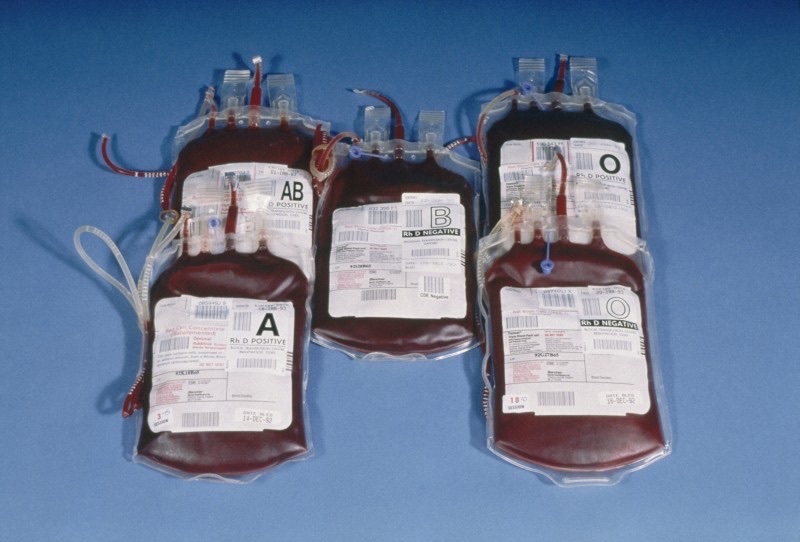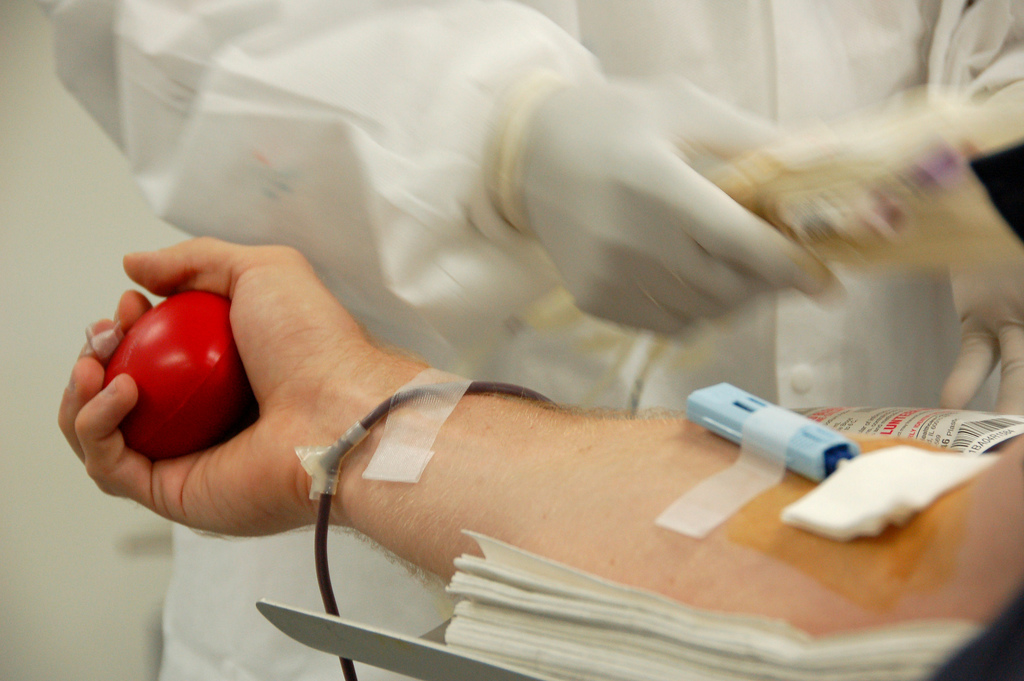It was tantamount to a Friday afternoon “news dump.” On Monday, December 21, 2015—amidst the final build-up to Christmas and the related travel and time off—the United States Food and Drug Administration (FDA) announced that it was changing its obsolete and discriminatory policy on blood donation by men who have sex with men. For 32 years, gay and bisexual men faced what was essentially a lifetime prohibition from ever donating blood in the U.S. Formally, the proscription was for donations from men who had had sex with men since 1977, the retroactively identified year during which AIDS emerged.
But on the eve of the holidays, in the FDA’s “final guidance” on ostensibly modernizing its blood donor deferral policy “to reflect the most current scientific evidence and continue to ensure the safety of the U.S. blood supply,” the regulatory body declared that gay and bisexual men are now eligible to donate blood—as long as they have not had sex with another man during the previous year.
The supplanted ban, in place since the advent of the AIDS epidemic in the early 1980s, was born during an era of hysteria and limited research and knowledge as to the workings of the human immunodeficiency virus (HIV), which is the precursor to AIDS. Modes of HIV transmission were understood early in the crisis, but had no impact on deferral policy.
The timing of the press release suggests that the FDA wasn’t all that keen on this recent policy shift getting much public attention or scrutiny, though. And for good reason. Since the lifetime ban was enacted, scientists have not only made great strides in understanding HIV/AIDS, they have rendered HIV-positive status a chronic treatable condition with access to proper medication. More importantly, in terms of maintaining an untainted blood supply, long-in-place contemporary HIV-testing technology allows for the screening of blood donors. All donated blood is rigorously tested in a two-step process that prevents HIV-infected blood from being distributed. Blood is also screened for viruses such as hepatitis B and C.
The new policy virtually perpetuates the enshrinement of discrimination in blood donation eligibility, preventing many Good Samaritans from helping fellow citizens and, thus, diminishing the supply of healthy blood to those in need.
In the Photo: Creed on an HIV awareness t-shirt. Photo Credit: Steve Shapiro/2011 Caribbean HIV Conference
Deferral periods persist, in part, because some HIV infections cannot be detected by tests during a short period after infection. The “HIV window period,” during which a person who is HIV positive does not necessarily test as positive, is much briefer than one year, though—anywhere from 9 days to 3 months. But the new policy implies that gay male sex, regardless of safe-sex practices and HIV history, is inherently dangerous despite scientific evidence to the contrary.
Related articles: “EXPLORING THE MEANING OF GENDER”
“MILLENNIALS AND THE NEW MODERN FAMILY”
Hypocritically, the new U.S. policy would ban a married monogamous gay man who practices safe sex from giving blood while still allowing a promiscuous straight man who has had multiple partners within a year to donate blood. Conversely, for a man married to or involved in a committed relationship with another man would have to have abstained from sex during the previous year to be eligible to donate. Thus, the new policy virtually perpetuates the enshrinement of discrimination in blood donation eligibility, preventing many Good Samaritans from helping fellow citizens and, thus, diminishing the supply of healthy blood to those in need. Such continued cowardice in policy implementation impacts not only those discriminated against but casts a potentially much wider net, as those who need blood face what is rendered a smaller supply than would be offered by those willing to donate. The failure to cast off these vestiges of homophobia maintains the evaluation and stigmatizing of gay men as a group, rather than promoting the individual risk assessment process that all other potential blood donors receive.
In so many ways, the U.S. would do well to look at evidence from other countries. Portugal, for instance, has abandoned the “war on drugs” and now treats drug addiction as a public health issue, not a criminal one. Similarly, rather than setting time periods for exclusion and discriminating based on sexual orientation, the U.S. FDA would be well advised to consider the example of Italy to establish a reasonable, fair-minded, non-homophobic, and effective blood donation policy. Since 2001, Italy has employed individual risk assessment, based on behavior, rather than group-based exclusion. In fact, there and in other countries such as Spain, Mexico, Chile, and, since this fall, Argentina, the focus is on high-risk behaviors of all intended donors, regardless of sexual orientation, which facilitates the pathway for men in committed same- and safe-sex relationships to donate blood. None of these countries have experienced any known cases of infected blood transmission as a result of employing an individual risk model.
In the Photo: A patient donates blood. Photo Credit: Flickr/Dave Herholz
But, instead, the U.S. policy, echoing that of the United Kingdom and Australia, though surprisingly not as draconian as Canada’s five-year deferral (or worse, the slew of nations that maintain indefinite deferrals), has opted for perpetuating stigmatization while hiding behind the cloak of scientific rigor. The FDA’s Acting Commissioner Stephen Ostroff, MD, defended, “The FDA’s responsibility is to maintain a high level of blood product safety for people whose lives depend on it. We have taken great care to ensure this policy revision is backed by sound science and continues to protect our blood supply.” Further, Peter Marks, MD, PhD, deputy director of the FDA’s Center for Biologics Evaluation and Research claims that they investigated various options, including individual risk assessment.
In a move that falls short of its European neighbors but surpasses U.S. myopia, France will gradually lift its ban on accepting blood donation from men who have sex with men later this year. The first step will be allowing men who abstained from sex with men during the previous 12 months to donate blood. Also, gay men who have been celibate or had only one male sex partner during the preceding four months will be permitted to give blood plasma. Pending the results of studies within the succeeding year that reveal no added risk to the blood supply from the policy change, the deferral period in France for gay and bisexual men will coincide with that of heterosexual donors, who cannot donate if they have had more than one sex partner in the prior four months.
The FDA’s new policy faintly echoes President Obama’s “I’m not there yet” comment in relation to “gay marriage” or marriage equality. It’s a transitional step before sound science and saner minds prevail. Emulating France would be a better transitional step. But to claim that the new U.S. policy is a truly rational progressive step is disingenuous at best, and flouts earlier calls by the American Red Cross, the American Association of Blood Banks and the American Medical Association to end the ban. It also invites continued vigor in the activist community, such as the National Gay Blood Drive and Gay Men’s Health Crisis and many other advocates, to fight for full fairness and equality. That is a worthy goal in every nation, of course. I encourage you to research the policies in your country and to agitate for rational, non-discriminatory policy in filling the world’s blood banks.
_ _












